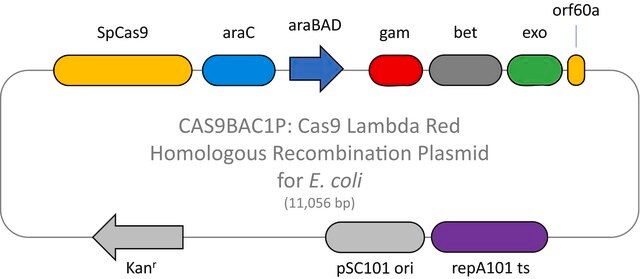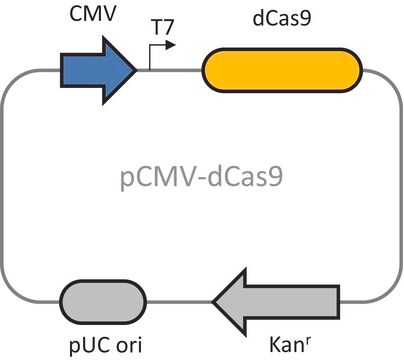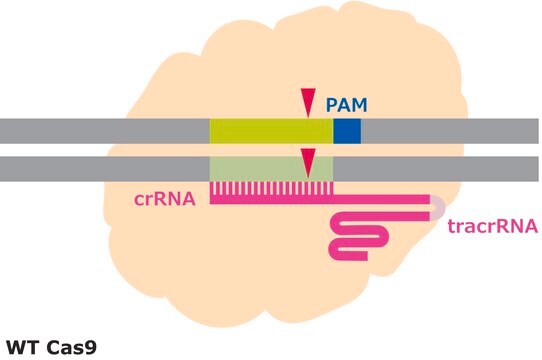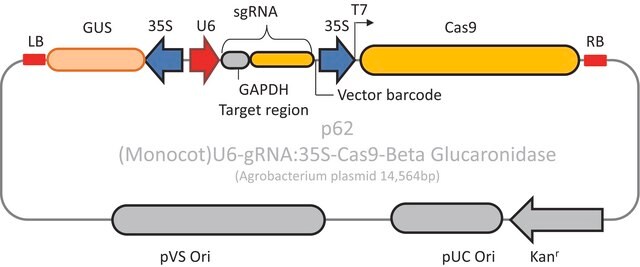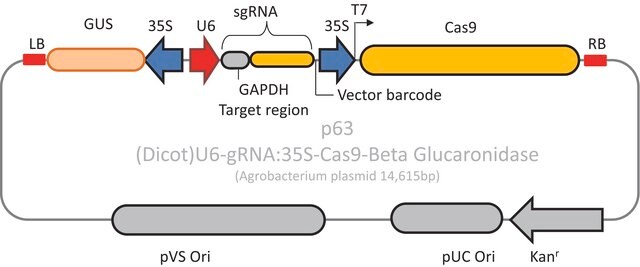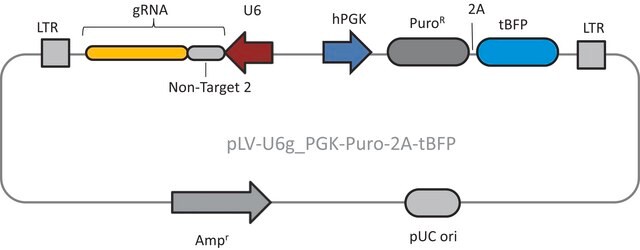CRISPR06
CRISPR UNIVERSAL NEGATIVE CONTROL 1
About This Item
Produits recommandés
Forme
liquid
Niveau de qualité
Conditionnement
vial of 50 μL
Concentration
20 ng/μL in TE buffer; DNA (1μg of plasmid DNA)
Application(s)
CRISPR
Conditions d'expédition
dry ice
Température de stockage
−20°C
Catégories apparentées
Description générale
Application
- Creation of gene knockouts in cell lines
- Creation of knock-in cell lines with promoters, fusion tags or reporters integrated into endogenous genes
Caractéristiques et avantages
Composants
Principe
Forme physique
Notes préparatoires
which may not be suitable for transfection into particular cell types. For best results, we advise maxi-prepping
plasmids using endotoxin-free DNA purification kits prior to transfection.
Autres remarques
Informations légales
Code de la classe de stockage
12 - Non Combustible Liquids
Classe de danger pour l'eau (WGK)
WGK 1
Point d'éclair (°F)
Not applicable
Point d'éclair (°C)
Not applicable
Certificats d'analyse (COA)
Recherchez un Certificats d'analyse (COA) en saisissant le numéro de lot du produit. Les numéros de lot figurent sur l'étiquette du produit après les mots "Lot" ou "Batch".
Déjà en possession de ce produit ?
Retrouvez la documentation relative aux produits que vous avez récemment achetés dans la Bibliothèque de documents.
Les clients ont également consulté
Articles
View experimental data showing crispr/cas expression and enrichment using FACS
CRISPR endonucleases have shown wide variation in their activity, even among multiple CRISPRs designed within close genomic proximity.
Protocoles
Learn about CRISPR Cas9, what it is and how it works. CRISPR is a new, affordable genome editing tool enabling access to genome editing for all.
Notre équipe de scientifiques dispose d'une expérience dans tous les secteurs de la recherche, notamment en sciences de la vie, science des matériaux, synthèse chimique, chromatographie, analyse et dans de nombreux autres domaines..
Contacter notre Service technique
